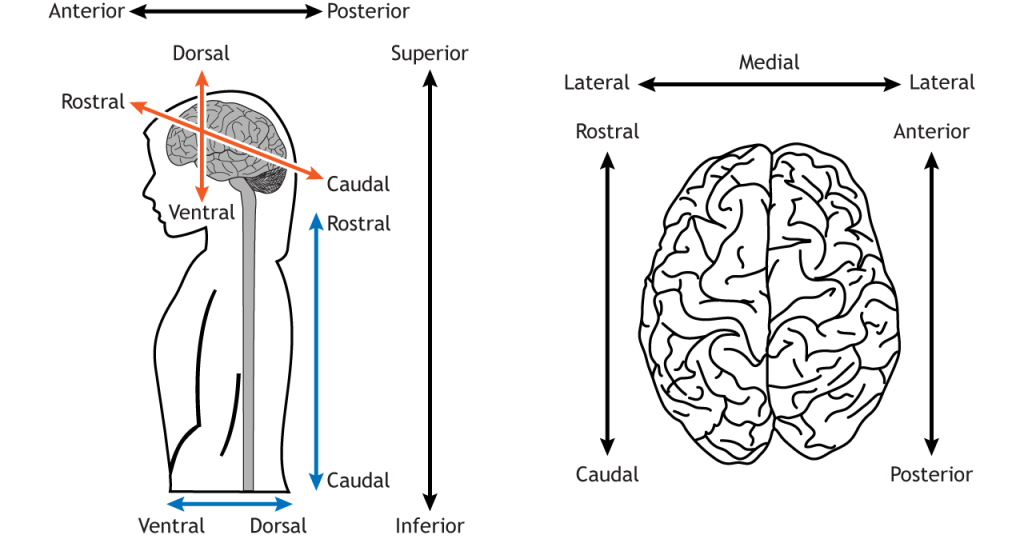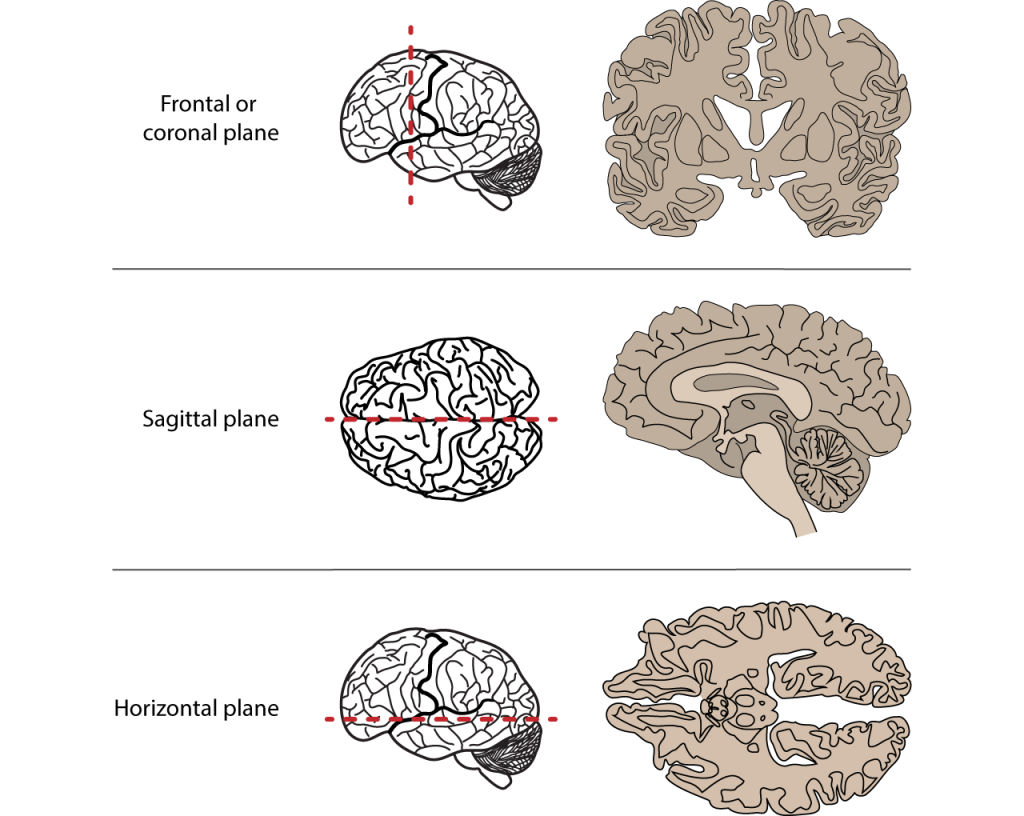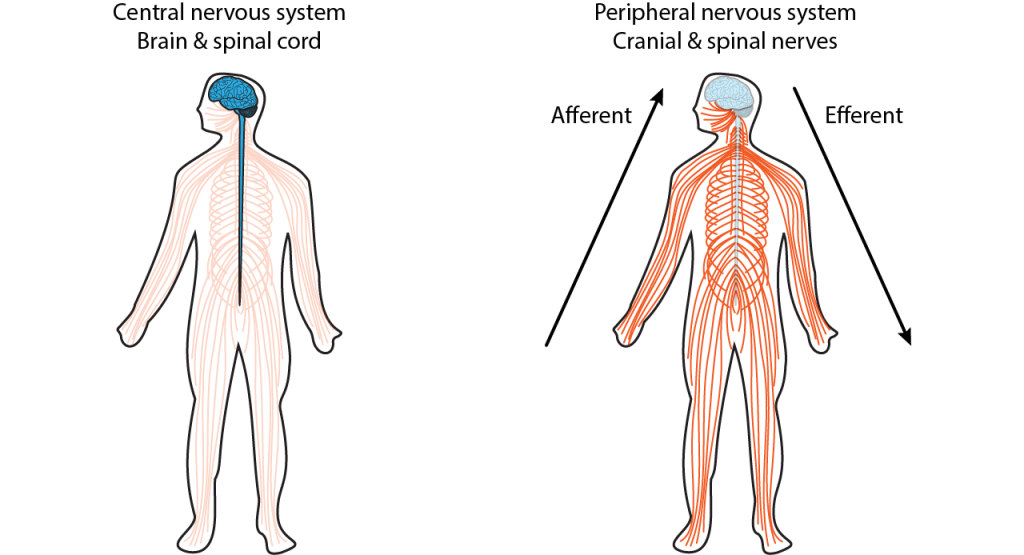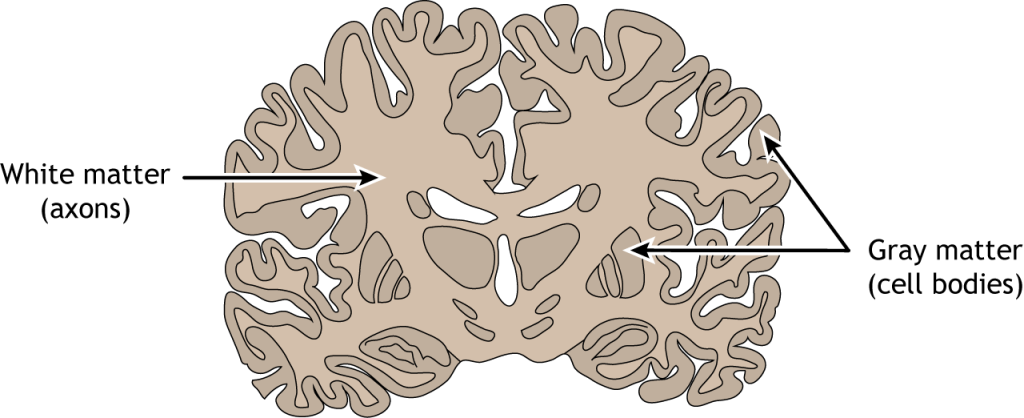16 Anatomical Terminology
Casey Henley
Familiarity with the terminology used to describe location and relationships within the nervous system is critical as we move forward into examining brain systems.
Directional Terms
Directional terms are used to locate one structure, usually in relation to another structure. Some terms, like dorsal or ventral, are relative to the axis of the central nervous system, so the direction these terms define changes if used for brain regions versus other body regions. Other terms, like superior or inferior, keep their meaning across the entire body.
- Anterior: In front of; toward the face
- Posterior: Behind; toward the back
- Superior: Above; toward the head
- Inferior: Below; toward the feet
- Medial: Toward the middle
- Lateral: Toward the edge
- Dorsal: Toward the top of the brain or the back of the spinal cord
- Ventral: Toward the bottom of the brain or the front of the spinal cord
- Rostral: Toward the front of the brain or the top of the spinal cord
- Caudal: Toward the back of the brain or the bottom of the spinal cord

Anatomical Planes
There are planes or axes that can be used to examine the nervous system. The frontal or coronal plane is a vertical plane in a medial to lateral direction, dividing objects into front and back pieces. The sagittal plane is also a vertical plane but in a rostral-caudal direction, meaning it divides objects into right and left regions. Finally, the horizontal plane divides objects into top and bottom regions.

Nervous System Divisions
The nervous system is divided into two primary components. The central nervous system (CNS) is comprised of the brain and the spinal cord. The peripheral nervous system (PNS) is comprised of the cranial and spinal nerves. When information flow is described in the nervous system, it can either be afferent communication, meaning it is moving from the periphery to the brain, or efferent communication, meaning it is moving from the brain to the periphery.

Tissue in the central nervous system can be further divided into either white matter or gray matter. White matter regions are comprised of axons. It appears white due to the myelin sheath on the axons. Gray matter regions are comprised of cell bodies and dendrites. Gray matter is the location of most synapses.

Key Takeaways
- Anatomical terminology is critical for determining neurological landmarks
Test Yourself!
Video Lecture
Media Attributions
- Anatomical Directions © Casey Henley is licensed under a CC BY-NC-SA (Attribution NonCommercial ShareAlike) license
- Anatomical Planes © Casey Henley is licensed under a CC BY-NC-SA (Attribution NonCommercial ShareAlike) license
- CNS and PNS © Casey Henley is licensed under a CC BY-NC-SA (Attribution NonCommercial ShareAlike) license
- White Gray Matter © Casey Henley is licensed under a CC BY-NC-SA (Attribution NonCommercial ShareAlike) license

